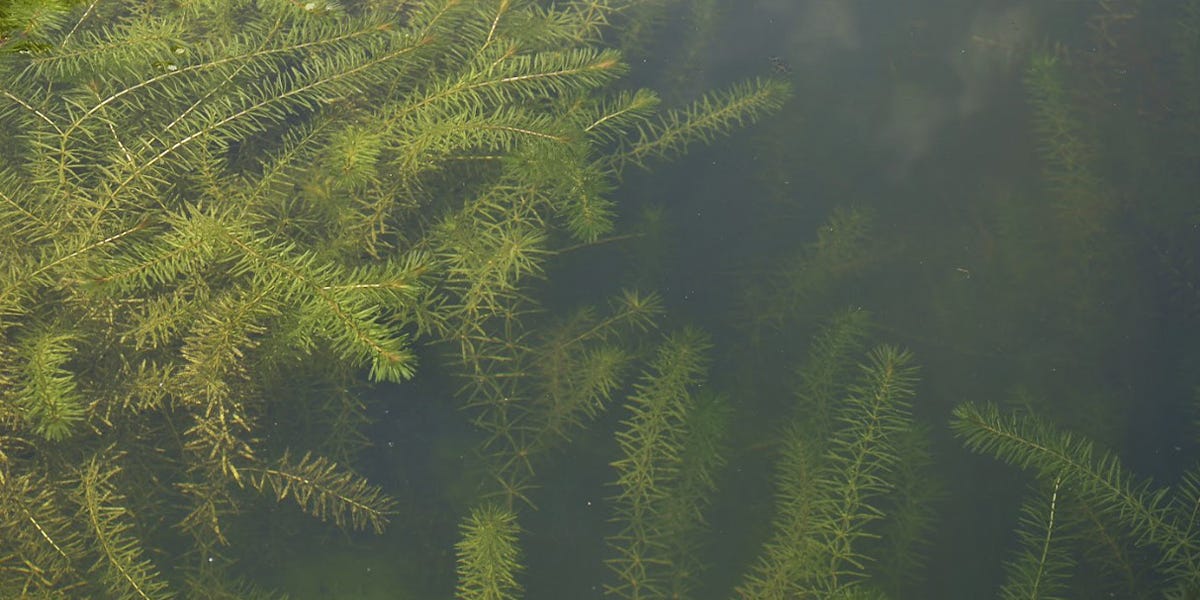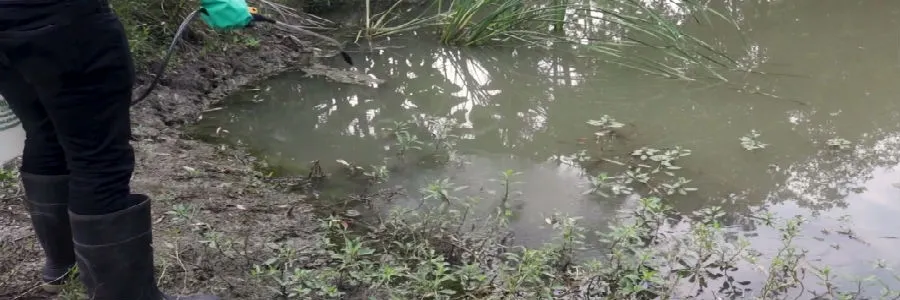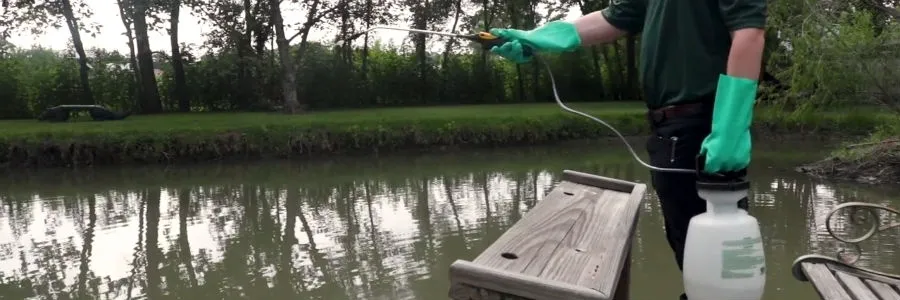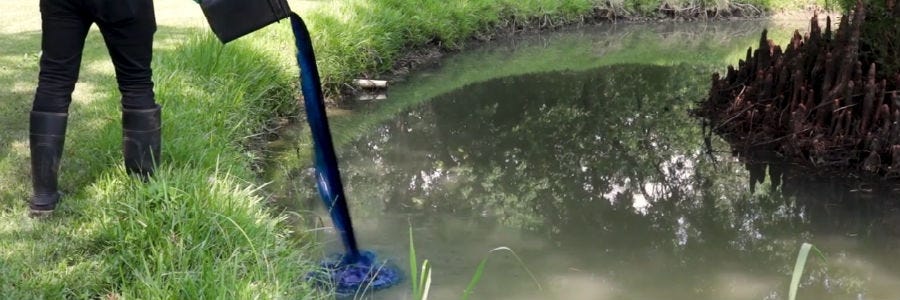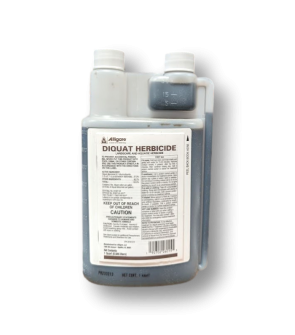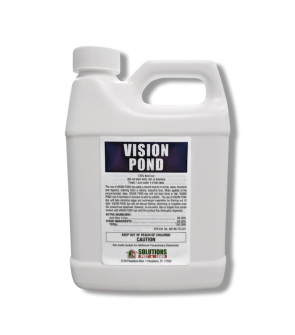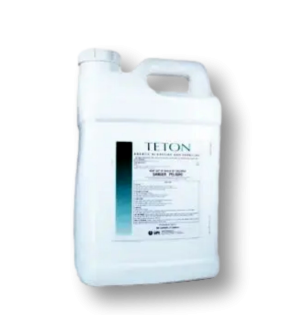Gain access to personalized product screening, the best pricing, rewards, and more!
Most Effective Products
Hydrilla Control: How To Get Rid of Hydrilla
This page is a general DIY guide for controlling hydrilla. Using the suggested products and methods, you can control hydrilla. Follow this DIY article and use the recommended products, and we guarantee 100% control of hydrilla.
Hydrilla is a perennial weed that forms dense colonies and can grow to the surface in water over 20 feet deep. Hydrilla branches at an alarming rate and after reaching the surface it extends across it forming thick mats. This plant is known as the invisible menace, because most of the time they go undetected until they have filled the water.
Hydrilla can reproduce via fragmentation, from seeds, from turions (also known as axillary buds), and from tubers. Hydrilla outbreaks can deal a lot of damage to the economy. Millions of dollars are spent trying to control this aquatic pest which notoriously gets in the way of recreational activities and opportunities like boating, swimming, fishing, etc.
If you are dealing with Hydrilla on your property, this step-by-step DIY guide can help you in the form of effective aquatic herbicides and helpful how-to advice.
Identification

Before proceeding with a treatment program, you must be sure you are dealing with a hydrilla infestation. Careless identification can lead to using the wrong treatment methods, which can waste time and money. Below are the characteristics that will help you understand what hydrilla looks like.
- Hydrilla can be identified by their long, slender stems, which are branched and can reach up to 25 feet long. The long stems grow to the surface of the water, creating dense infestations that can crowd out or replace native aquatic plants.
- Leaves have obvious saw tooth margins and grow in whorls of four to eight around the stem. On the underside of the leaf, one or more teeth may be on the midriff.
Using this description and image will help you identify whether the weed growing in your pond is hydrilla. If you are having trouble identifying the plant, contact us, and we will do our best to identify the weed and offer control suggestions.
Inspection
 Once you confirm that you are dealing with hydrilla, you can move on to inspection. During this phase, you will locate areas where hydrilla is thriving and observe the conditions that allow it to thrive. This information will help you know where to focus your herbicide application.
Once you confirm that you are dealing with hydrilla, you can move on to inspection. During this phase, you will locate areas where hydrilla is thriving and observe the conditions that allow it to thrive. This information will help you know where to focus your herbicide application.
Where to Look
Survey your lake or pond and determine what the best and safest plan of option there is to take. You have to take into account how the lake or pond is utilized not only by humans but also by the fishes and aquatic life that inhabit the water. Asking yourself these questions and weighing the pros and cons of control before proceeding is a highly recommended task.
What to Look For
If you have Hydrilla on your pond, it's hard to miss it. You will see the plant in large numbers bunched together on the surface of the water. Hydrilla leaves are blade-shaped and range between 1/8 inch and 3/8 inch long with small tooth margins and spines on the underside of the midrib which make them feel rough. Leaves are usually 4 to 8 in a whorl.
Treatment
Before handling any chemicals, it is vital to put on the proper personal protective equipment (PPE) for safety.
Our top recommended product to treat hydrilla is Diquat Herbicide. The active ingredient in this product does a great job killing Diquat Herbicide, and it can also control a wide range of other problematic aquatic weeds.
Step 1: Prepare and Mix the Diquat

Before mixing and application, you will need to calculate the size of the water body you wish to treat to determine how much Diquat you will need.
For water bodies, the measurement is usually done by calculating the acreage or acre-foot. To do this, measure the length, width, and average depth of the water body in feet then divide by 43,560 (Length (ft.) x Width (ft.) x Average Depth (ft.) / 43,560 = Acre-feet).
According to the label, Diquat be mixed at a rate of 0.5 to 2.0 gallons of product in water per surface acre (per 4-foot water depth). For severe weed infestations, use the 2.0 gallon per surface acre rate.
Step 2: Apply Diquat to the Hydrilla
Once the Diquat is well-mixed, spray the herbicide over the water along the shoreline, spot treat emerged weeds, or broadcast spray over the waters surface where the hydrilla is. Use a fan spray nozzle to ensure an even coating on the water surface.
Step 3: Follow Up Applications
Depending on the size of your pond or lake, you may need to conduct treatment in sections, waiting 2 weeks between treatments until you have treated the entire body of water. Reapplication may be necessary 21 days after the initial application is complete. Hydrilla can be a stubborn weed to remove so monitoring your water is key and repeated application is crucial to get complete control.
Prevention
Once hydrilla has been eliminated from your property, you will need to implement preventative measures to ensure that this weed does not return.
- To keep hydrilla from returning on your pond, we recommend applying Vision Pond Dye. Vision Pond Dye hinders plant development by blocking sunlight into the water and also gives your pond a clean blue color. Measure the appropriate amount of Vision Pond Dye into a bucket based on your pond area measurement findings. The label recommends applying at a rate of 1 quart per 1 surface acre of water at a 5-foot average depth. Pour the pond dye over the edge directly into the body of water and the water's natural movement will disperse the dye.
Key Takeaways
What is Hydrilla?
- Hydrilla is an aquatic weed that creates large mats which can overtake a pond.
How to Get Rid of Hydrilla
- Applications of Diquat Herbicide have proven to work best against hydrilla and will kill growths quickly.
Prevent Hydrilla Reinfestations
- Applying Vision Pond Dye after a herbicide application works as a great preventative measure that hinders hydrilla growth and improves the look of your pond.






